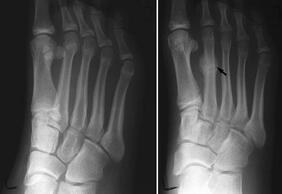|
3/1/2019 13 Comments Stress Fractures in Dancers Stress fractures occur in up to 46% of dancers during their career (Delegete, A). Over 60% of these fractures occur during puberty. Decreased strength, proprioception, and balance control, as well as poor technique can lead to increased stress to the bones and thus increased risk for stress fracture. Females are twice as likely than males to have a stress fracture secondary to caloric restriction, reduced bone mineral density, and menstrual irregularities (Delegete, A). RISK FACTORS
POSSIBLE SIGNS/SYMPTOMS:
REDUCING RISK Rehabbing a stress fracture can involve complete rest for 6 to 10 weeks. It is important to recognize possible signs and risk factors to avoid bone damage.
References: 1) Delegete, A. Health Considerations for the Adolescent Dancer. A webinar through the Harkness Center for Dance Injuries. Accessed September 23, 2018. 2)Weiss, David S. Stress Fractures in Dancers: Evaluation and Treatment. A webinar through the Harkness Center for Dance Injuries. Accessed November 11, 2018.
13 Comments
|
CategoriesAll Cross Training Injury Prevention Nutrition Recipes Wellness Archives
October 2021
|
 RSS Feed
RSS Feed